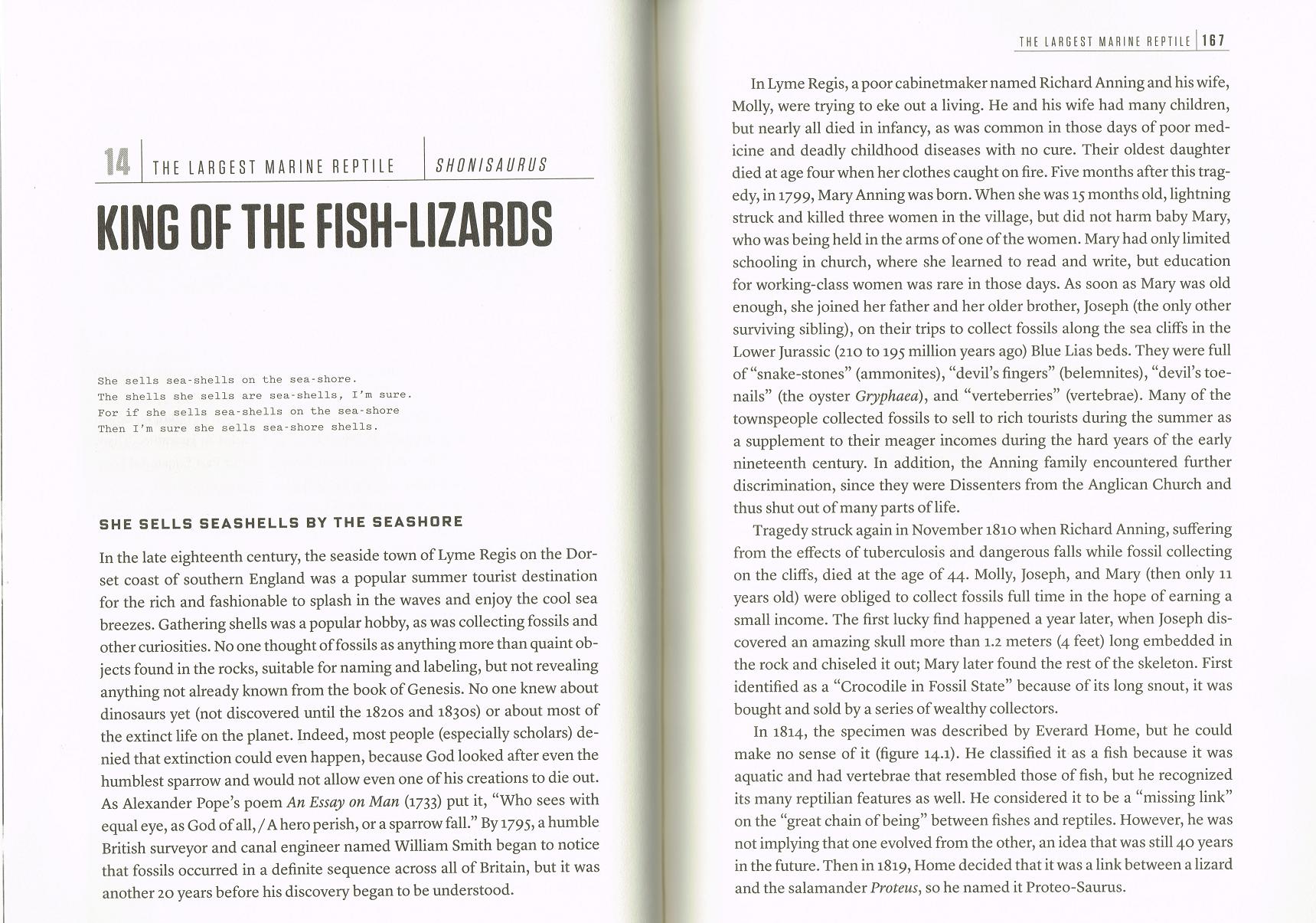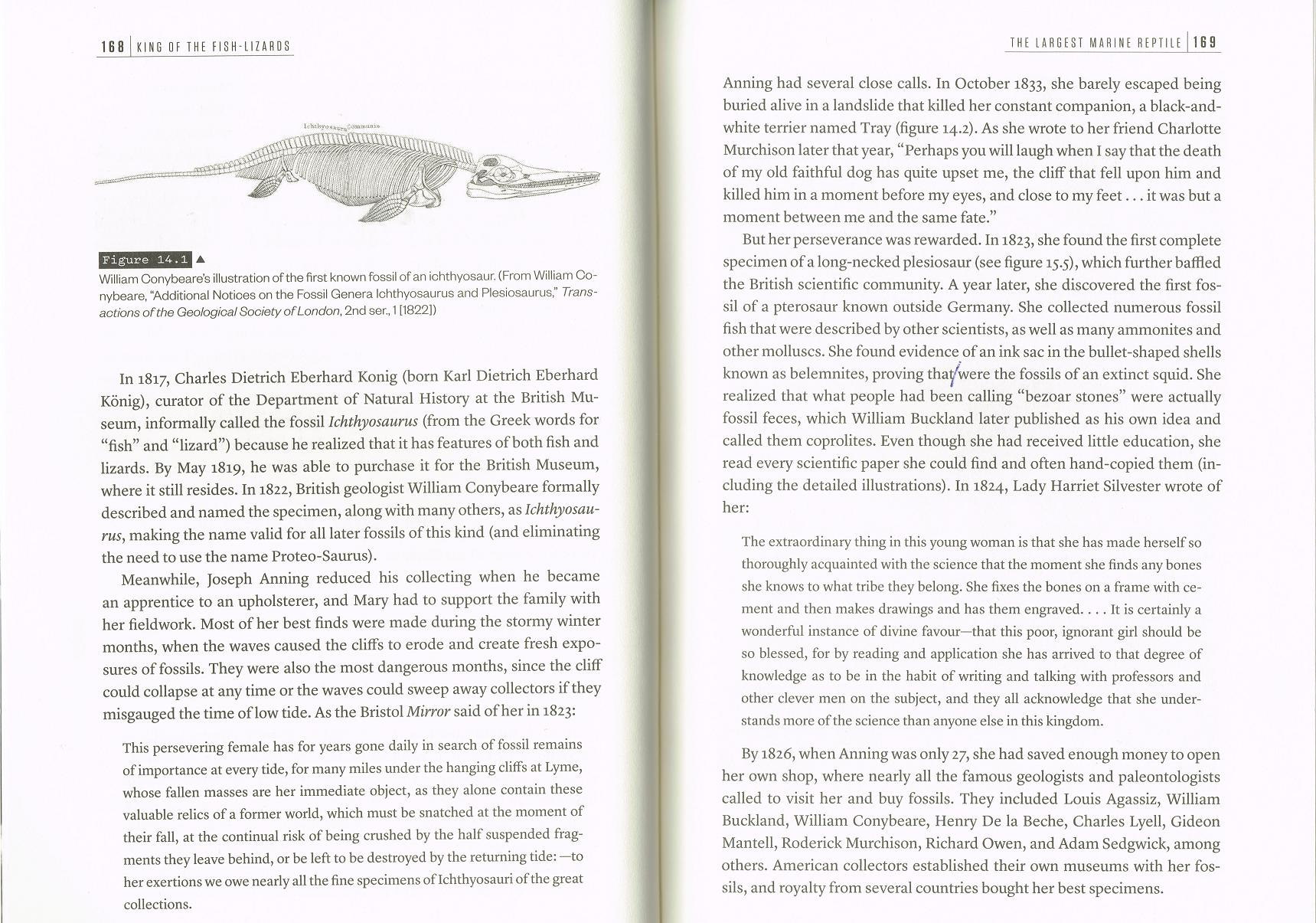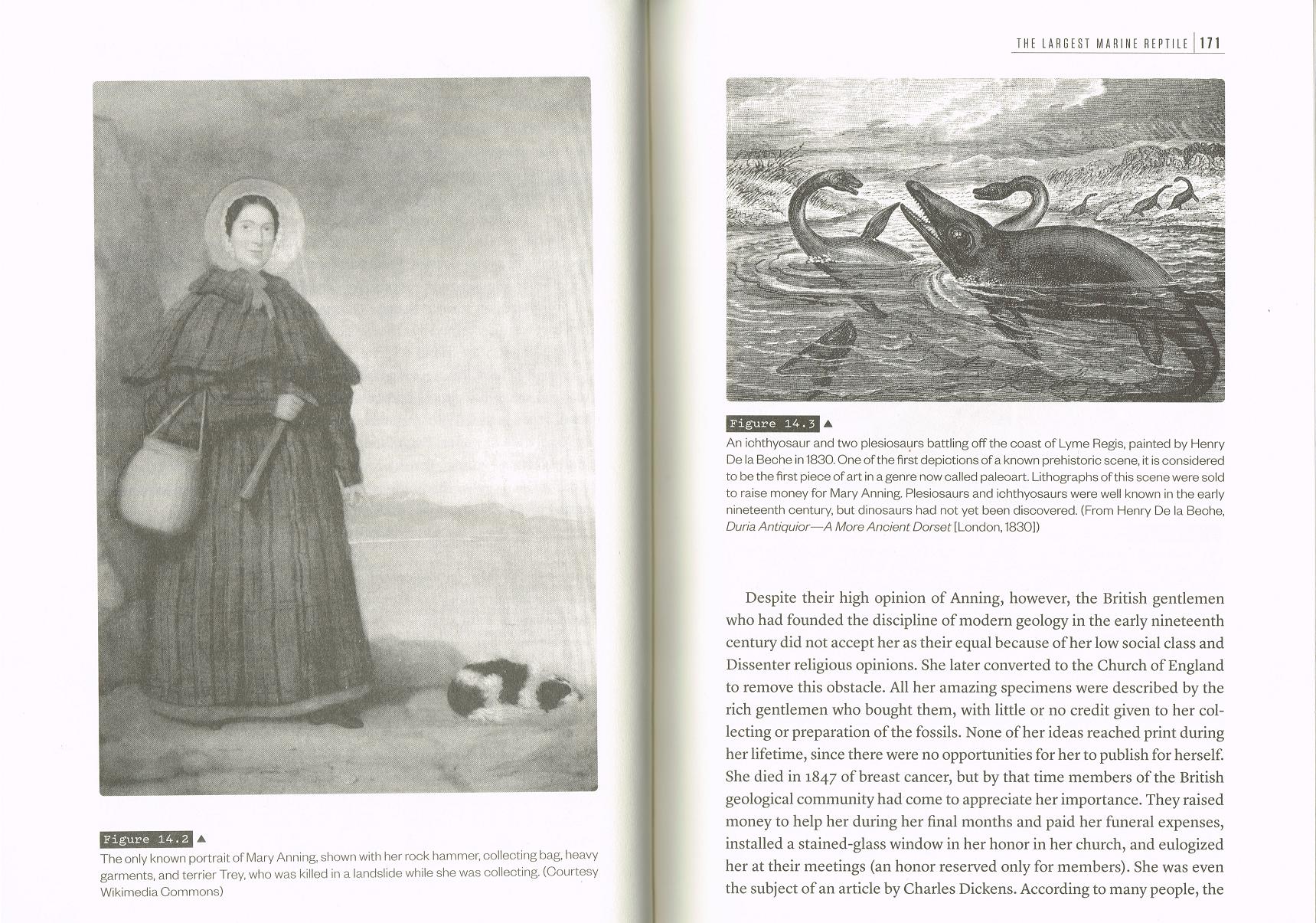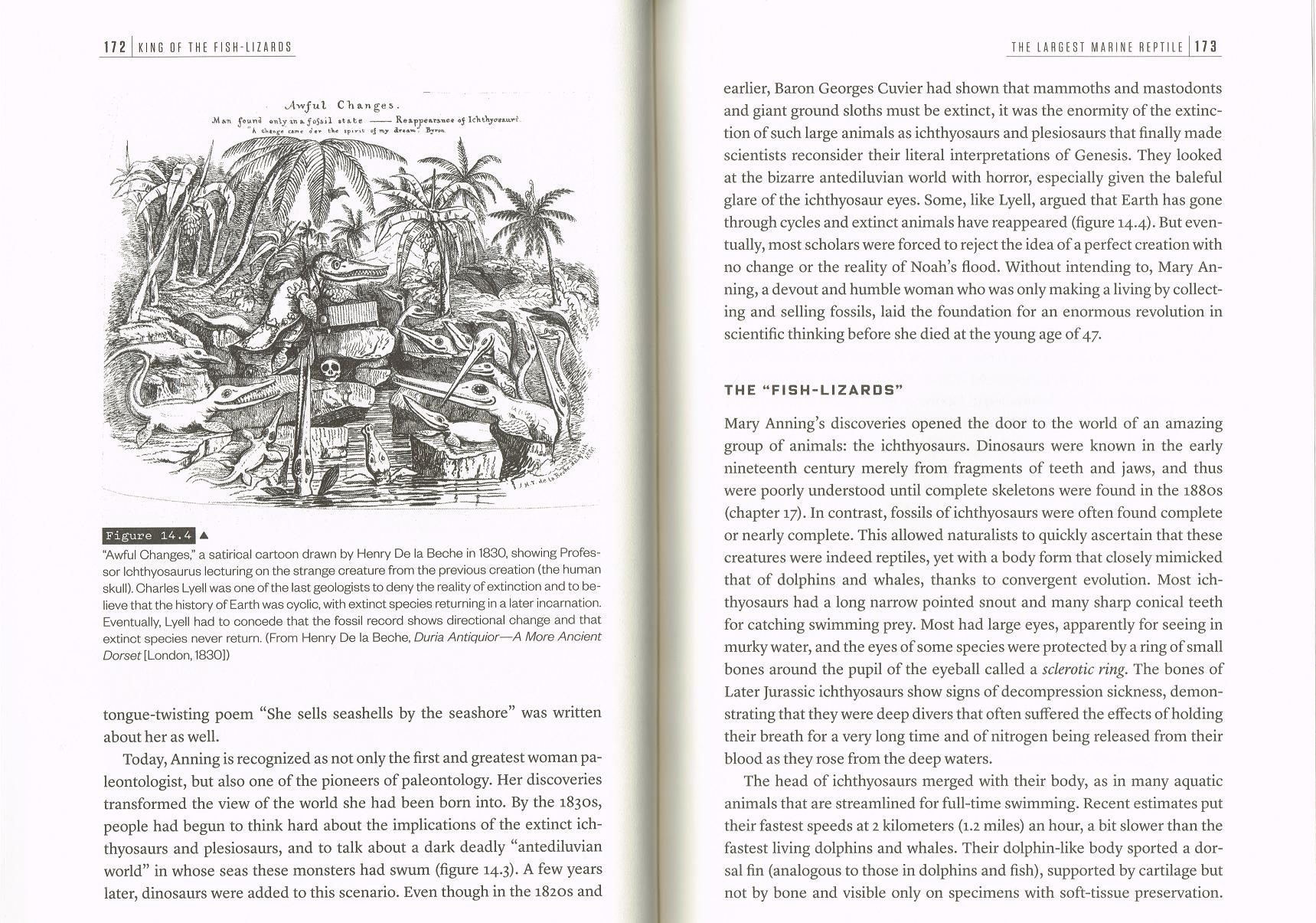The Story of Life In 25 Fossils
Donald Prothero
Most fossil localities are biased for hard-shelled organisms. Without places like the Burgess Shale in Canada, the Maotianshan Shales in China, and the Sirius Passet in Greenland, we would be ignorant of the huge range of bizarre soft-bodied creatures of the Cambrian.
During the Carboniferous (about 300 million years ago) forests of tree ferns produced huge volumes of vegetation. When they died and fell into the swamps they were growing in there were no animals evolved to digest the tough lignin tissues of the trees, so they just accumulated without decomposing, were compressed and heated, turning to coal.
James Hutton published his Theory of the Earth in 1788. He'd studied the Old Red Sandstone which is widely exposed in Scotland and across most of eastern England. It was obviously sedimentary, representing the erosion of a huge mountain range that was no lnger in existence. Further, the sandstone was laid over the top of older rocks that had first been tilted on their side, then eroded off after being turned from horizontal to vertical. These strata implied that the world was unimaginably old.




Loch Ness Monster physically impossible. Climate too cold to support a cold-blooded reptile - Scotland has only two species of very small lizard and two snake species, and Scotland currently in warmest climate spell for centuries. And for it to have survived since Age of Dinosaurs 65 million years ago, there would have to have been many breeding pairs, and so lots of (big) skeletons should have been found. Loch Ness is a glacial valley that was covered by a mile thick sheet of ice for 2.5 million years, and which only finally melted 20,000 years ago.
More books on Urban Legends
Human genome sequenced 2001, chimp in 2005. Confirmed that share 98-99% of DNA. The 1-2% that's different are in the regulatory genes - the on-off switches which tell other genes when to be expressed. For example, all primates have the structural genes for a long tail, but in humans they are not expressed, except in rare cases where the regulatory genes fail, and a human grows a long tail. Similarly, birds still have genes to make teeth, but not usually expressed.
Our DNA is more similar to chimp DNA than any two species of frog are similar. Even the DNA of lions and tigers are more different than human/chimp. And, the difference between all humans is a lot smaller than the difference between chimps from various parts of Africa. This suggests that the big differences between chimp and human appearance are caused by tiny changes in the regulatory genes having huge effects.
The big changes are the location of the spinal cord opening in the skull - either forward in chimps, or at the rear in upright humans; the nasal opening - either a big snout or a small nose; and the jaw - a U-shaped jutting jaw for chimps vs a round shape in humans. And these are the features that show up in transitional fossils.
More books on Evo
Books by Title
Books by Author
Books by Topic
More books on Urban Legends
Human genome sequenced 2001, chimp in 2005. Confirmed that share 98-99% of DNA. The 1-2% that's different are in the regulatory genes - the on-off switches which tell other genes when to be expressed. For example, all primates have the structural genes for a long tail, but in humans they are not expressed, except in rare cases where the regulatory genes fail, and a human grows a long tail. Similarly, birds still have genes to make teeth, but not usually expressed.
Our DNA is more similar to chimp DNA than any two species of frog are similar. Even the DNA of lions and tigers are more different than human/chimp. And, the difference between all humans is a lot smaller than the difference between chimps from various parts of Africa. This suggests that the big differences between chimp and human appearance are caused by tiny changes in the regulatory genes having huge effects.
The big changes are the location of the spinal cord opening in the skull - either forward in chimps, or at the rear in upright humans; the nasal opening - either a big snout or a small nose; and the jaw - a U-shaped jutting jaw for chimps vs a round shape in humans. And these are the features that show up in transitional fossils.
More books on Evo
Books by Title
Books by Author
Books by Topic